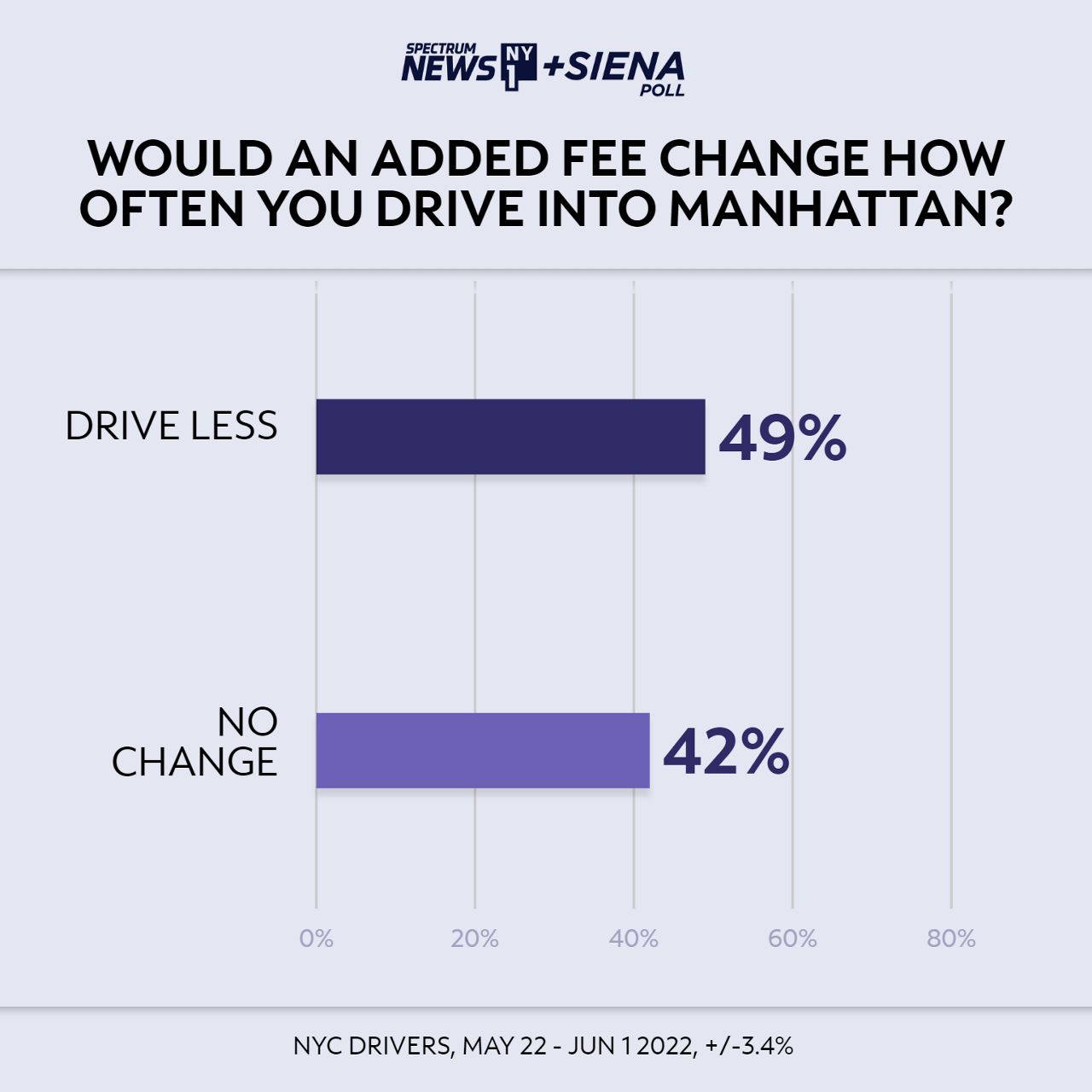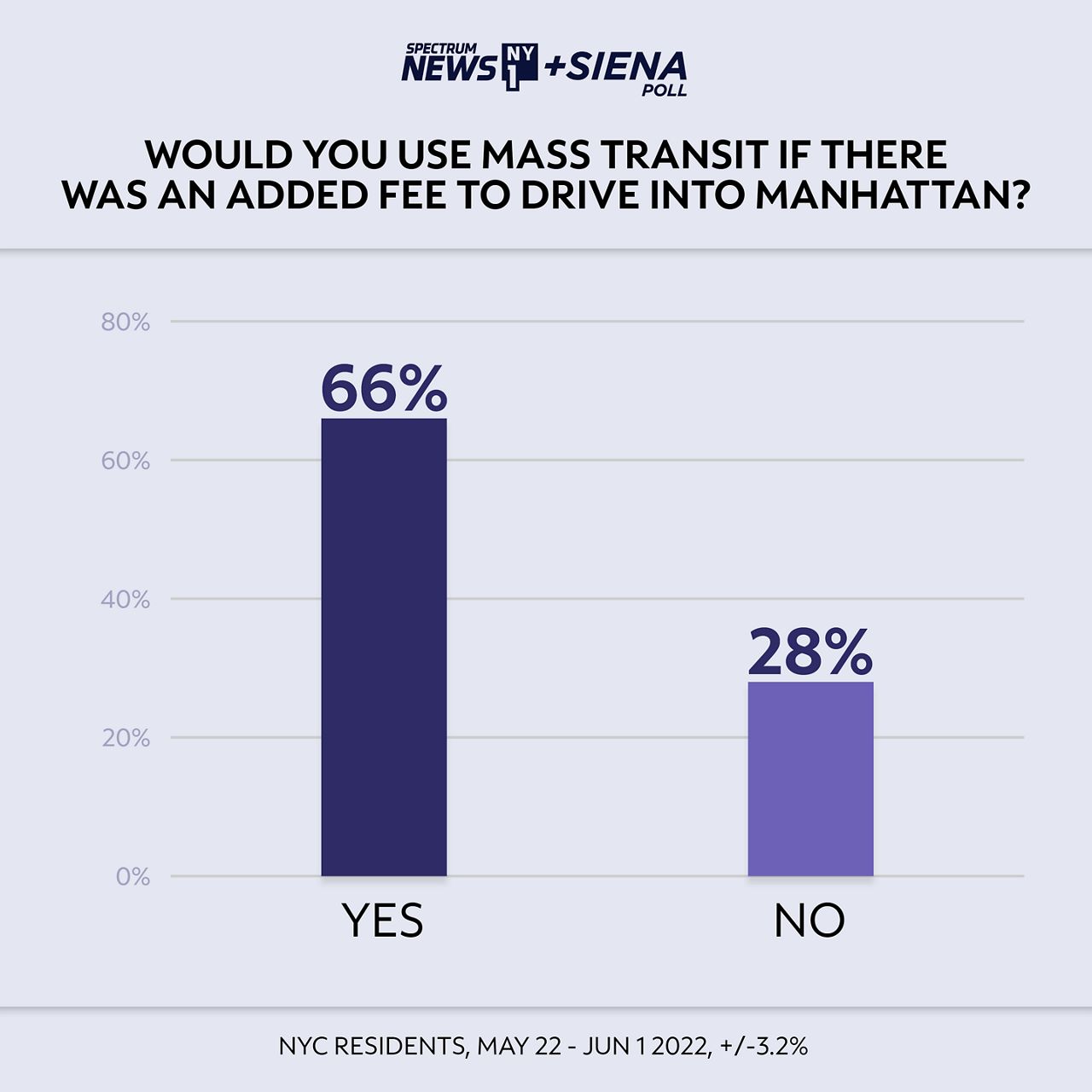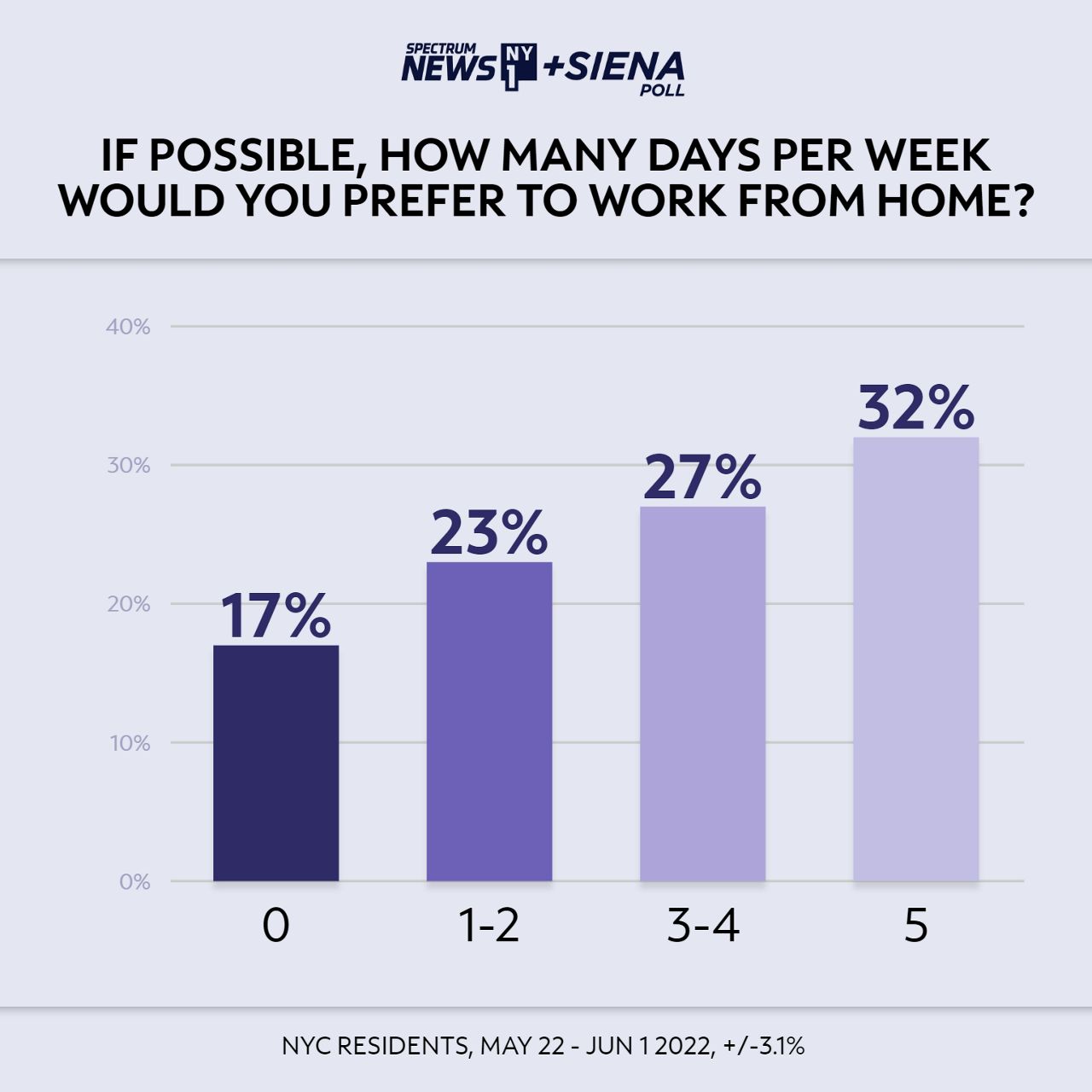Drivers cheered Gov. Kathy Hochul’s recent remarks signaling congestion pricing won’t be implemented in the near future.
“This is not going to happen over the next year, under any circumstances,” she said at a WCBS Democratic gubernatorial debate Tuesday.
Heading into Manhattan from Queens Wednesday, driver Ed Jones told NY1 he believes the apparent delay is justifiable.
“We’re coming back after the pandemic, people starting to get back to work,” he said. “Let people get back on their feet, let businesses start getting back together. And then start the congestion pricing.”
An exclusive Spectrum News NY1/Siena College poll found that among the motorists who responded, about half (49%) said they would drive less often if there was an added fee to drive into Manhattan below 60th street.

Another 42% said there’d be no change to how often they drive.
And the survey found that two-thirds of mass transit users polled (66%) would opt for that mode of transportation if congestion pricing was imposed.
Siena College conducted the poll between May 22 and June 1, before Hochul made remarks about the timeline for the rollout of congestion pricing.

And while subway ridership is struggling to rebound after the pandemic, just about half of New Yorkers said they had not taken the train at all in the week before they were surveyed, while 28% had taken it four or more times.
“Even if someone says I didn’t ride the subway over the last week, it doesn’t mean that they never ride the subway. It’s just that it’s not part of their regular, every day transportation,” explained Don Levy, the director of Siena College Research Institute.
Mayor Eric Adams has urged New Yorkers still working from home back to their offices, but Levy says the pandemic has changed the way many New Yorkers get to their jobs and do their jobs.
“It introduced an entire new different way of looking at work,” Levy said.
Asked in the Spectrum News NY1/Siena College poll what New Yorkers wished their schedule could look like, just 17% said they prefer no days of working from home.
A combined 50% want a hybrid arrangement, ranging in preference from one to four days of working from home.
And a plurality (32%) wanted their five-day work week to take place at home.
“Many employees now say, ‘I don’t really want to come back into the office. I’m just as, if not more productive. I’ve adjusted to it,’” Levy said.




